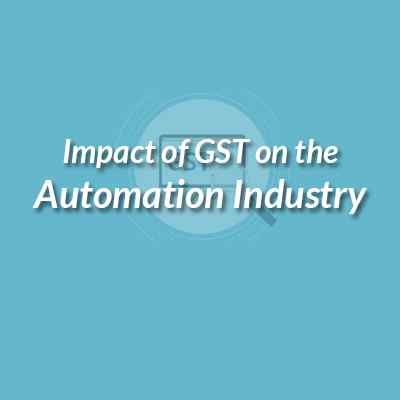Unlocking the Economics of Industry Automation: Maximizing ROI

Introduction
In today's rapidly evolving business landscape, industry automation has emerged as a key driver of efficiency, productivity, and competitiveness. Automation refers to the application of advanced technologies, such as robotics, artificial intelligence, and IoT, to streamline industrial processes and tasks that were previously performed by humans. By reducing human intervention, industry automation offers several advantages, including improved accuracy, reduced cycle times, increased throughput, and enhanced safety.
The objective of this article is to explore the economic impact of industry automation investments. We will delve into the initial costs involved in implementing automation solutions and the long-term benefits that result from such investments. Additionally, we will analyze key performance indicators (KPIs) used to measure the success and effectiveness of automation initiatives.
Understanding the Economics of Industry Automation
a. Initial Costs and Long-Term Savings
The adoption of industry automation requires a significant initial investment. Companies must purchase automation equipment, invest in technology integration, and retrain their workforce. However, it's essential to view automation as a long-term investment rather than a mere expense. Over time, automation leads to substantial cost savings through increased productivity, reduced labor costs, and minimized errors. For instance, robotic automation can perform repetitive tasks with unmatched precision, minimizing wastage and material costs.
b. Key Performance Indicators (KPIs) for Automation Success
To measure the effectiveness of automation investments, companies use specific KPIs. Common KPIs include:
• Overall Equipment Efficiency (OEE): Measures the equipment's performance, availability, and quality.
• Return on Investment (ROI): Evaluates the financial returns gained from automation investments.
• Cycle Time Reduction: Analyzes how automation reduces the time required to complete a process.
• Defects per Million Opportunities (DPMO): Quantifies the quality improvements achieved through automation.
Data from reputable sources, such as industry reports and case studies, can provide insights into the financial benefits experienced by companies that have successfully implemented automation.
Factors Influencing Investment Decisions
a. Impact of Technology Advancements on Costs
The cost of automation solutions is influenced by technological advancements. Over time, automation technologies become more accessible and affordable, making them an attractive option for a broader range of industries and businesses. Advancements in robotics, AI algorithms, and sensor technologies have led to more cost-effective and efficient automation solutions.
b. Industry-Specific Considerations
Each industry has its unique challenges and requirements, influencing the decision to invest in automation. Manufacturing, for example, may focus on automated assembly lines to increase production speed and consistency. Logistics and warehousing may invest in automated guided vehicles (AGVs) to optimize material handling and reduce operational costs. Healthcare may implement robotic surgery systems to enhance precision and patient outcomes.
c. Government Incentives and Policies
Governments often provide incentives and policies to encourage businesses to invest in automation. Tax credits, grants, and subsidies can significantly reduce the initial financial burden of automation implementation. By exploring and taking advantage of these incentives, businesses can maximize their ROI.
Credible sources such as government websites, industry associations, and economic reports can provide valuable information on these incentives and policies.
Benefits of Industry Automation
a. Increased Productivity and Efficiency
Automation streamlines operations and eliminates bottlenecks in industrial processes, resulting in increased productivity. Robots and machines can work continuously without fatigue, reducing downtime and maximizing output. Automation enables round-the-clock production, leading to higher production rates and improved efficiency.
b. Cost Reductions from Labor Savings and Error Reduction
Labor cost reduction is one of the most significant advantages of industry automation. Companies can reallocate their staff to more complicated and value-added activities by automating repetitive and tedious operations. Furthermore, automation reduces human errors, resulting in cost savings by eliminating costly mistakes and rework.
c. Improved Product Quality and Consistency
Automation ensures a high level of product quality and consistency. Machines can perform tasks with precision and accuracy, resulting in uniform and standardized products. This consistency enhances the brand's reputation and reduces the costs associated with defects and returns.
Relevant industry studies and case studies can provide concrete evidence of these benefits across different sectors.
Case Studies and Real-World Examples
To understand the true economic impact of industry automation, let's explore a few case studies:
a. Automotive Manufacturing:
A leading automotive manufacturer implemented robotic automation in their production line, resulting in a 25% increase in production speed and a 20% reduction in defects. The initial investment was recovered within two years, and ongoing cost savings amounted to $1 million annually.
b. E-Commerce Fulfillment Center:
An e-commerce giant adopted a warehouse automation system, reducing order processing times by 50%. Labor costs were reduced by 30%, and customer satisfaction improved significantly due to faster order fulfillment.
c. Pharmaceutical Packaging:
A pharmaceutical company integrated robotic packaging systems, reducing packaging errors by 80%. The automation investment paid off within three years, and the company experienced a substantial decrease in recalls and product liability costs.
Overcoming Challenges and Risks
a. Managing Upfront Costs and Financial Planning
The initial investment needed for automation may pose a barrier for some businesses. To overcome this challenge, companies should perform a thorough cost-benefit analysis to assess the potential return on investment (ROI). Developing a comprehensive financial plan that considers both short-term expenses and long-term savings is crucial to ensure a successful automation implementation.
b. Strategies for Workforce Reskilling and Job Displacement Concerns
Automation may lead to concerns about job displacement. However, companies can develop a reskilling program to transition employees to new roles that require higher-level skills. By investing in workforce development, companies can retain skilled workers and ensure a smooth transition to an automated environment.
c. Mitigating Security and Privacy Challenges
Automation introduces new security and privacy risks, especially concerning data protection and system vulnerabilities. Companies should implement robust cybersecurity measures and adhere to data protection regulations to safeguard sensitive information.
Credible sources such as industry experts and research papers can provide insights into effective strategies for overcoming these challenges.
Best Practices for Maximizing Returns on Automation Investments
a. Cost-Benefit Analysis
Perform a comprehensive cost-benefit analysis to assess the potential financial gains and weigh them against the upfront costs of automation. Consider both direct and indirect benefits when calculating the ROI.
b. Incremental Implementation
Implement automation incrementally to manage risks and costs effectively. Start with smaller-scale automation projects and expand gradually as the organization gains experience and confidence.
c. Leveraging Data Analytics
Use data analytics to monitor and optimize automated processes continually. Data-driven insights can lead to process improvements and increased returns on automation investments.
Future Outlook and Trends
a. Current Trends in Industry Automation
Industry automation is witnessing continuous advancements, such as the integration of artificial intelligence, machine learning, and the Internet of Things (IoT). These technologies enable automation systems to adapt, learn, and optimize processes in real-time, further enhancing their effectiveness and cost efficiency.
b. Predictions on the Future Impact
Experts predict that automation will continue to revolutionize industries, leading to increased productivity and global economic growth. While some jobs may be displaced, new roles will emerge, focused on overseeing, maintaining, and enhancing automated systems.
Conclusion
The economics of industry automation demonstrate that automation investments can yield substantial returns for businesses. While the initial costs may seem daunting, the long-term benefits in terms of increased productivity, cost reductions, and improved product quality make automation a strategic and financially sound decision. By embracing automation and leveraging data-driven insights, businesses can maximize their returns on automation investments and remain competitive in a rapidly evolving world.







